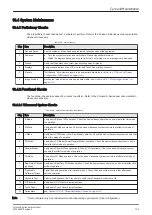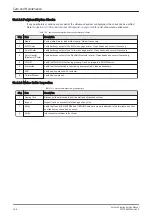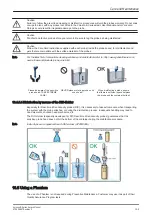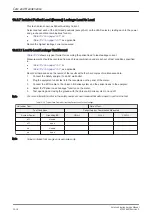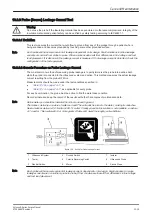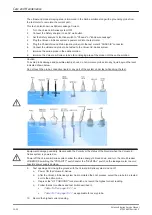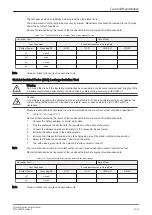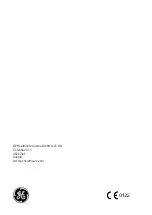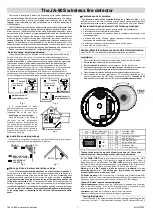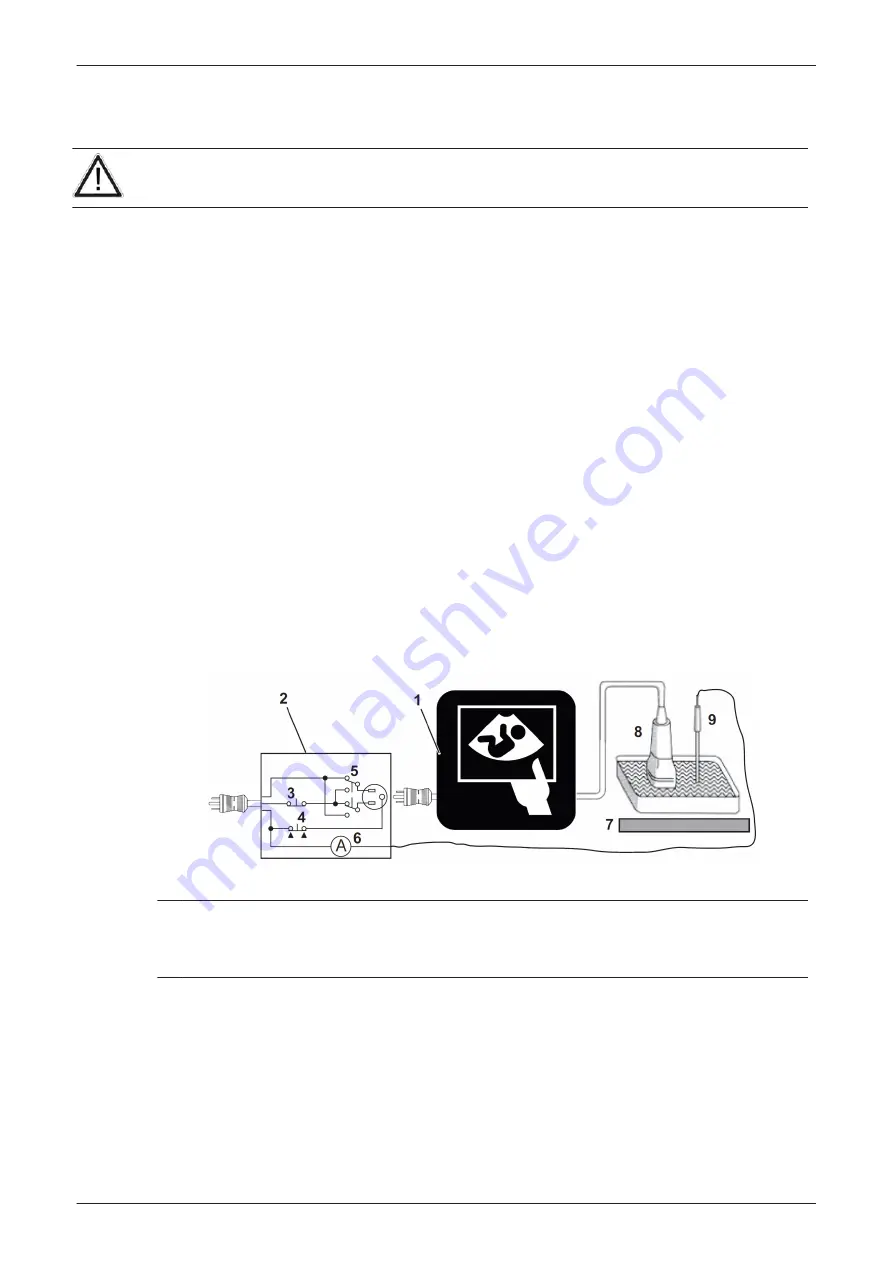
10.6.8 Probe (Source) Leakage Current Test
Warning
Do not use the probe if the insulating material has been punctured or otherwise compromised. Integrity of the
insulation material and patient safety can be verified by safety testing according to IEC60601-1.
10.6.8.1 Definition
This test measures the current that would flow to ground from any of the probes through a patient who is
being scanned and becomes grounded by touching some other grounded surface.
Note
Each probe will have some amount of leakage, dependent on its design. Small variations in probe leakage
currents are normal from probe to probe. Other variations will result from differences in line voltage and test
lead placement. It is abnormal if no leakage current is measured. If no leakage current is detected, check the
configuration of the test equipment.
10.6.8.2 Generic Procedure on Probe Leakage Current
The most common method of measuring probe leakage is to partly immerse the probe into a saline bath
while the probe is connected to the ultrasound system and active. This method measures the actual leakage
current resulting from the probe RF drive.
Measurements should be made under the test conditions specified in:
•
•
, as applicable for every probe.
For each combination, the probe must be active to find the worst case condition.
Record all data and keep the record of the results with other hard copies of maintenance data.
Note
Saline water pod should be insulated from floor and earth ground.
The Saline solution is a mixture of water and salt. The salt adds free ions to the water, making it conductive.
Normal saline solution is 0.9% salt and 99.1% water. If ready-mixed saline solution is not available, a mixture
of 1 quart or 1 liter water with 9 or more grams of table salt, mixed thoroughly, will substitute.
Figure 10-4 Set Up for Probe Leakage Current
1
Ultrasound System
4
Ground Switch
7
Isolator
2
Tester
5
Polarity Reversing Switch
8
Ultrasound Probe
3
Neutral Switch
6
Meter
9
Saline Probe
Note
Each probe will have some amount of leakage current, dependent on its design. Small variations in probe
leakage currents are normal from probe to probe. Other variations will result from differences in line voltage
and test lead placement.
Care and Maintenance
Voluson E-Series Service Manual
KTD106657 Revision 2
10-19
Summary of Contents for H48681XB
Page 11: ...Introduction Voluson E Series Service Manual KTD106657 Revision 2 1 3 ...
Page 12: ...Introduction 1 4 Voluson E Series Service Manual KTD106657 Revision 2 ...
Page 13: ...Introduction Voluson E Series Service Manual KTD106657 Revision 2 1 5 ...
Page 14: ...Introduction 1 6 Voluson E Series Service Manual KTD106657 Revision 2 ...
Page 15: ...Introduction Voluson E Series Service Manual KTD106657 Revision 2 1 7 ...
Page 16: ...Introduction 1 8 Voluson E Series Service Manual KTD106657 Revision 2 ...
Page 17: ...Introduction Voluson E Series Service Manual KTD106657 Revision 2 1 9 ...
Page 365: ......
Page 366: ...GE Healthcare Austria GmbH Co OG Tiefenbach 15 4871 Zipf Austria www gehealthcare com ...

